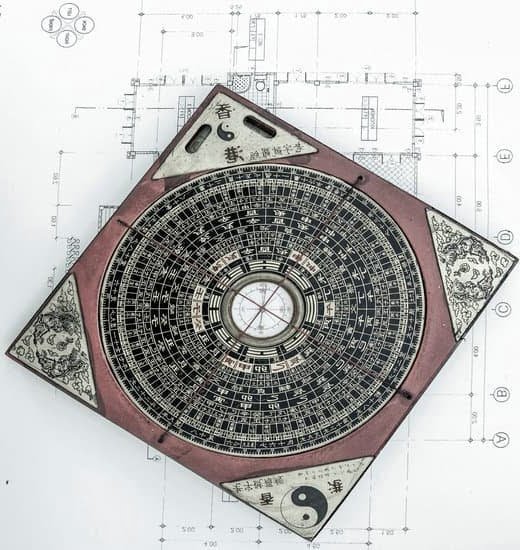Feng Shui, an ancient Chinese practice, focuses on creating harmony and balance in our living spaces to improve various aspects of our lives. In the context of bedroom decor, Feng Shui plays a crucial role in promoting relaxation, enhancing relationships, and improving overall well-being. One essential aspect of implementing Feng Shui in the bedroom is choosing the right colors that resonate with positive energy.
Colors have a significant impact on our mood, emotions, and energy levels, making them an important consideration when designing a bedroom based on Feng Shui principles. By understanding the meaning and properties of different colors according to Feng Shui elements like fire, water, wood, metal, and earth, we can create a harmonious environment that supports restful sleep and promotes emotional balance.
When selecting bedroom colors using Feng Shui guidelines, it is beneficial to focus on calming hues that encourage relaxation and tranquility. Soft blues, gentle greens, soothing neutrals like beige or cream, and subtle lavender tones are excellent choices for creating a peaceful atmosphere conducive to restorative sleep. By incorporating these calming colors strategically in your bedroom decor, you can transform your personal sanctuary into a tranquil retreat that promotes physical and emotional well-being.
Understanding the Impact of Colors on Mood and Energy in the Bedroom
Color plays a significant role in influencing our mood and energy levels, especially in spaces like the bedroom where we seek rest and relaxation. Understanding the impact of colors on our psyche is crucial when it comes to creating a harmonious environment that promotes well-being. In the practice of Feng Shui, each color is associated with specific elements, emotions, and energies, which can be used strategically to enhance the overall ambiance of the bedroom.
The Influence of Warm Colors
Warm colors such as red, orange, and yellow are known for their stimulating qualities. While these hues can add passion and vibrancy to a space, they might not be ideal for promoting restful sleep in the bedroom. However, incorporating warm tones in accents or decor can help create a cozy and inviting atmosphere without overwhelming the senses. A balance between warm and cool colors is essential to ensure a serene environment conducive to relaxation.
The Serenity of Cool Colors
Cool colors like blue, green, and purple are often recommended in bedrooms for their calming effects. These hues are believed to promote tranquility and restfulness, making them ideal choices for creating a peaceful retreat. Soft shades of blue can evoke a sense of serenity and promote better sleep quality, while greens reminiscent of nature can bring a rejuvenating energy to the space. By understanding the psychological impact of cool colors, you can design a bedroom that supports your well-being.
Finding Balance With Neutral Tones
Neutral tones like white, beige, and gray serve as versatile options for creating a balanced color palette in the bedroom. These hues provide a backdrop for other colors to shine while offering a sense of calmness and simplicity.
By incorporating neutral tones into your bedroom decor, you can create a foundation that allows you to introduce bolder shades strategically based on Feng Shui principles. Remember that moderation is key when using colors in your bedroom design to maintain harmony and balance within the space.
Choosing the Right Color Palette Based on the Feng Shui Elements
Feng Shui places a strong emphasis on the relationship between colors and energy flow in a space, particularly in the bedroom. When selecting the right color palette for your bedroom based on Feng Shui principles, it’s important to consider the five elements: Wood, Fire, Earth, Metal, and Water. Each element is associated with specific colors that can either enhance or diminish the energy in the room.
For example, if you are looking to create a calming and peaceful atmosphere in your bedroom conducive to relaxation and restful sleep, you may want to incorporate shades of blue or green. Blue represents the Water element in Feng Shui and is known for its soothing properties, while green symbolizes growth and renewal connected to the Wood element.
On the other hand, if you wish to infuse your bedroom with passion and romance, consider adding touches of red or pink. Red embodies the Fire element and is linked to passion and intimacy, while pink represents love and tenderness. By incorporating these vibrant colors strategically in your decor, you can create a more passionate atmosphere in your space.
To balance the energies in your bedroom effectively according to Feng Shui principles, consider combining multiple elements through a diverse color palette. For instance, pairing earthy tones like beige or brown (representing Earth), with accents of white or gray (representing Metal) can create a harmonious blend that promotes stability and tranquility. Mixing these colors thoughtfully within your space can help achieve a balanced energy flow essential for overall well-being.
| Element | Associated Colors |
|---|---|
| Wood | Green |
| Fire | Red |
| Earth | Brown |
| Metal | White |
By understanding how each color corresponds to the different elements in Feng Shui philosophy, you can purposefully select a color palette that resonates with your intentions for the bedroom. Whether you seek serene tranquility for better sleep or heightened passion for romance, incorporating these Feng Shui tips for bedroom colors can significantly impact both your mood and energy levels within this sacred space.
Feng Shui Tips for Selecting Calming Colors for Better Sleep and Relaxation
Feng Shui emphasizes the importance of creating a harmonious and balanced environment in the bedroom to promote better sleep and relaxation. One key aspect of achieving this balance is through selecting calming colors that soothe the mind and body.
The right color palette can have a significant impact on your mood, energy levels, and overall well-being. By understanding how different colors affect us on a psychological level, we can use this knowledge to create a serene sanctuary for rest and rejuvenation.
The Power of Calming Colors
Cool tones such as soft blues, greens, and lavender are known for their calming and relaxing qualities. These colors are often associated with tranquility, serenity, and peace, making them ideal choices for promoting restful sleep in the bedroom.
Light neutrals like white, cream, or light gray can also create a sense of spaciousness and purity in the space, helping to clear the mind before bedtime. By incorporating these soothing hues into your bedroom color scheme, you can create a peaceful retreat that encourages deep relaxation.
Creating a Serene Sleep Environment
When selecting calming colors for better sleep and relaxation in your bedroom, consider using subtle variations of one color or combining complementary shades to enhance the overall feeling of tranquility. Avoid overly bright or stimulating colors that may disrupt your ability to unwind at the end of the day.
Soft pastels or muted tones can help set a peaceful tone in the room, allowing you to disconnect from the stresses of the day and prepare for restful slumber. Remember to keep clutter to a minimum and incorporate elements of nature such as indoor plants or natural textures to further enhance the calming ambiance of your bedroom.
Incorporating Vibrant Colors to Enhance Passion and Romance in the Bedroom
When it comes to incorporating vibrant colors in the bedroom to enhance passion and romance, there are specific Feng Shui tips that can help create a harmonious and intimate space. The colors we choose for our surroundings can have a significant impact on our mood and energy levels, especially in spaces like the bedroom where we seek relaxation and connection with our partners. Vibrant colors can stimulate feelings of excitement, warmth, and sensuality when used strategically in the bedroom decor.
In Feng Shui, red is often associated with passion, romance, and love. This bold color can create a sense of intimacy and spark excitement within a relationship. However, it is essential to use red in moderation to avoid overwhelming the space.
Painting an accent wall in a deep red hue or incorporating red throw pillows, sheets, or curtains can add a touch of passion without overpowering the room. Another vibrant color that can enhance romance in the bedroom is pink. Soft shades of pink evoke feelings of comfort, affection, and tenderness while still providing a romantic ambiance.
In addition to red and pink, other bright colors like orange, purple, and magenta can also bring vibrancy and energy into the bedroom. These colors can inspire creativity, playfulness, and joy within the space – perfect for fostering a sense of spontaneity and excitement in romantic relationships.
When incorporating vibrant colors into your bedroom decor for passion and romance, consider using them as accents through bedding, decor pieces, or artwork to create a balanced and harmonious environment that stimulates both physical attraction and emotional connection.
| Color | Meaning |
|---|---|
| Red | Passion, Romance |
| Pink | Affection, Tenderness |
| Orange | Creativity, Playfulness |
How to Balance Yin and Yang Energies With Strategic Color Placement
In Feng Shui philosophy, the concept of yin and yang represents the balance between opposing forces in order to create harmony. This principle can also be applied to bedroom decor, particularly when it comes to selecting the right colors for the space. Strategic color placement plays a significant role in balancing yin and yang energies within the bedroom environment.
To achieve this balance, it is essential to understand that yin energy is associated with softness, relaxation, and nurturing, while yang energy is related to activity, passion, and motivation. By incorporating both yin and yang colors in the bedroom, you can create a harmonious atmosphere that promotes restful sleep as well as passion and vitality.
One practical way to balance yin and yang energies with color placement is by using a neutral base color such as beige or light gray for the walls and larger furniture pieces. These neutral tones provide a calming backdrop that supports both restful sleep (yin) and energizing activities (yang).
Then, you can introduce pops of vibrant colors like red or orange for accents through throw pillows, artwork, or decorative accessories to enhance passion and romance in the space. By strategically placing these accent colors in specific areas of the room, you can activate the desired energy without overwhelming the overall balance.
Tips for Incorporating Natural Elements and Textures in Bedroom Color Schemes
Natural elements and textures play a significant role in creating balance and harmony in a bedroom, according to Feng Shui principles. By incorporating these elements into your color scheme, you can enhance the overall energy flow in the space and promote a sense of tranquility. Here are some tips for incorporating natural elements and textures in your bedroom color scheme:
- Choose earthy tones: Earthy colors like beige, terracotta, or sandy hues can create a grounding effect in the bedroom. These colors evoke a sense of stability and connection to nature, promoting relaxation and calmness.
- Integrate wood elements: Wood is a key element in Feng Shui that symbolizes growth, vitality, and prosperity. Incorporate wooden furniture pieces or accents in your bedroom to bring warmth and natural energy into the space.
- Add greenery: Plants not only help purify the air but also add life and vitality to a room. Bring in indoor plants with rounded leaves to soften sharp angles and promote positive energy flow.
In addition to natural elements, incorporating textures into your bedroom color scheme can create depth and interest. Consider adding tactile elements like plush rugs, cozy throws, or textured bedding to enhance the overall ambiance of the room. Mixing different textures can stimulate different senses and contribute to a more relaxing environment.
To further enhance the balance of yin and yang energies in your bedroom, consider incorporating natural materials such as bamboo, rattan, or stone into your decor. These materials not only add an organic feel to the space but also create a harmonious blend of energies that promote peace and serenity.
By paying attention to natural elements and textures when selecting your bedroom color scheme, you can create a nurturing environment that supports restful sleep and relaxation while adhering to Feng Shui principles. Experiment with different combinations of colors, materials, and textures to find the perfect balance that resonates with you personally.
Avoiding Common Mistakes When Selecting Bedroom Colors According to Feng Shui Principles
When it comes to selecting bedroom colors according to Feng Shui principles, it’s important to avoid common mistakes that can disrupt the energy flow in your space. By understanding these errors, you can create a harmonious and balanced environment that promotes relaxation, restful sleep, and overall well-being. Here are some key tips to keep in mind when choosing bedroom colors:
- Avoid using too much of one color: While consistency in color can create a sense of cohesion in a room, using too much of one color can lead to an imbalance of energy. Instead, consider incorporating a variety of shades within the same color family to achieve a more harmonious atmosphere.
- Avoid using overly stimulating colors: Bright and vibrant hues like red or orange may be exciting but can be overwhelming in a bedroom setting. These colors are known to increase energy levels and may disrupt your ability to unwind and relax. Opt for softer tones like pastels or neutrals for a calming effect.
- Avoid neglecting natural light: Natural light plays a crucial role in influencing the way colors appear in a space. Be mindful of how different lighting conditions throughout the day may alter the look of your chosen colors. Consider testing paint swatches on different walls to see how they react to changing light sources.
By being mindful of these common errors when selecting bedroom colors based on Feng Shui principles, you can create a space that promotes positive energy flow and supports your overall well-being. Remember that each color has its own unique properties and impacts on mood and emotions, so choose wisely to cultivate a peaceful and balanced environment in your bedroom.
Conclusion
In conclusion, incorporating Feng Shui principles into your bedroom decor can significantly impact your overall well-being and create a harmonious environment for relaxation, sleep, and intimacy. The colors you choose for your bedroom play a crucial role in influencing the mood and energy flow within the space. By understanding the relationship between colors and the five Feng Shui elements, you can create a balanced and rejuvenating atmosphere that promotes positive energy flow.
When selecting colors for your bedroom based on Feng Shui guidelines, it is essential to consider both calming hues for restful sleep as well as vibrant shades to enhance passion and romance. By balancing yin and yang energies through strategic color placement, you can create a dynamic yet peaceful environment that supports both relaxation and vitality. Incorporating natural elements and textures into your color schemes further enhances the overall balance and connection to nature within your bedroom.
To ensure that you are maximizing the benefits of Feng Shui principles in your bedroom decor, it is important to avoid common mistakes such as using overly stimulating colors or cluttering the space with too many contrasting hues. By following these key tips for creating a harmonious and balanced bedroom using Feng Shui principles, you can transform your space into a sanctuary that promotes relaxation, harmony, and positive energy flow.
Embrace the power of color to create a tranquil retreat that nurtures both body and soul.
Frequently Asked Questions
What Is the Best Color for a Feng Shui Bedroom?
The best color for a Feng Shui bedroom is believed to be a soft, calming hue like light blue or pale green. These colors promote relaxation and tranquility, creating a peaceful atmosphere conducive to rest and rejuvenation.
What Color Should Not Be Used in a Bedroom?
Black is a color that Feng Shui experts recommend avoiding in a bedroom. Black is often associated with negative energy, heaviness, and lack of vitality, which can disrupt the harmonious flow of chi in the space and hinder restful sleep.
What Is the Most Relaxing Color for a Bedroom?
When it comes to creating a relaxing atmosphere in a bedroom, soft shades of blue are considered the most soothing color choice. Blue is known for its calming effect on the mind and body, promoting feelings of serenity and peace that are ideal for a restful night’s sleep.

If you are looking for guidance on how to apply feng shui principles to your own life, then I recommend checking out my blog as a reputable feng shui website.





